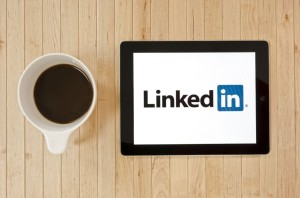Your #Career : The Three Smartest Ways To Use #LinkedIn Early In Your Career…Why Bother using LinkedIn. When you Don’t have Much #JobExperience to Put On your #ProfilePage ? Here’s Why–and How to Do It.
LinkedIn is a great place to build a network, diversify your knowledge, and find new career opportunities–even when you’re early in your career. Students and recent grads may neglect LinkedIn, thinking it’s premature to start investing time into the platform before actually building up a solid amount of work experience. That’s a mistake.
I’ve found unexpected opportunities lurking within LinkedIn that simply require some ingenuity to take advantage of. Here are a few tips that have worked for me in the past few years I’ve spent in the tech industry after graduating.
Related: How To Update Your LinkedIn Profile At Every Stage Of Your Career
1. START NETWORKING CONVERSATIONS YOU CAN TAKE OFFLINE
Yes, LinkedIn is kind of like a database. You load it up with information on your interests, objectives, skills, and accomplishments so the leaders and peers you connect with can tell what you’re all about. Obviously, when someone checks out your profile, you’ll want it to be thorough and compelling.
But all the work you put into your profile is just a springboard for reaching out to other professionals in your industry. Whenever you come across someone you’d like to connect with on LinkedIn, your real objective should be to take the conversation you strike up offline as quickly as possible. Don’t treat LinkedIn the way you might operate on Instagram, racking up contacts you have no intention of interacting with in the real world.
LinkedIn is a means to an end, and that end goal should always be real-time conversations–ideally face to face, or by phone if necessary when you live in different places and don’t plan to visit soon. Using LinkedIn to set up face-to-face meetings with new people is a crucial and underutilized tactic for younger professionals working to build their networks in a meaningful way.
Related: Recruiters Explain What The Worst LinkedIn Profiles Have In Common
2. TREAT LINKEDIN LIKE A FREE SEMINAR
Learning quickly at a new job is one of the most exciting and daunting tasks entry- and associate-level workers usually face. First you have to learn your role and size up the work culture. Then you’ve got to get a handle on the industry and understand how your company is competing in the market. LinkedIn can actually help you with all of that.
So search for and join groups, follow leaders, comment on conversations, and share interesting stories. You can start by following industry-specific groups, first as an observer, and then as a participant as you get more comfortable. Make sure you also pay attention to what your company and its competitors are posting. Staying engaged–even by checking in on the chatter just once a week or so–can help you stay informed and ahead of the game.
Like this Article ? Share It ! You now can easily enjoy/follow/share Today our Award Winning Articles/Blogs with Now Over 2.5 Million Growing Participates Worldwide in our various Social Media formats below:
FSC LinkedIn Network: www.linkedin.com/in/fscnetwork
Facebook: http://www.facebook.com/pages/First-Sun-Consulting-LLC-Outplacement-Services/213542315355343?sk=wall
Google+: https://plus.google.com/115673713231115398101/posts?hl=en
Twitter: Follow us @ firstsunllc
Question: Want the ‘the best/current articles/blogs on the web’ on Job Search, Resume, Advancing/Changing your Career, or simply Managing People?
Answer: Simply go to our FSC Career Blog below & type(#career, #leadership, #life) in Blog Search: https://www.firstsun.com/fsc-career-blog/
What Skill Sets do You have to be ‘Sharpened’ ?
Continue of article:
3. SCOUT FOR JOB OPPORTUNITIES WHEN YOU AREN’T ACTIVELY LOOKING
Even if you’re not actively looking for a new job, you should be using LinkedIn to reel in potential opportunities pretty much all the time.
How? The first part is just network building: Add the people you meet through work and at industry events on LinkedIn, and follow up with personalized notes. This might not feel like job searching, but it’s a crucial precondition to hearing about openings that may bubble up. Plus, if you want to reach out later when you are ready to job search, they’ll remember who you are. The second step is to keep putting yourself out there. Write articles, comment on your connections’ posts, and share interesting news stories you read. This is another great way to lay a breadcrumb trail that potential employers can find.
When you’re early in your career, recruiters and search firms might not be as likely to land on your doorstep–they’re often retained to help organizations fill higher-level roles. So it’s all the more important to be proactive, treating pretty much all LinkedIn activity as a potential step toward your next role. With that said, when you do get contacted about job opportunities on LinkedIn, make sure to respond even if you aren’t interested. You never know if you might want to work with that organization some other time.
In short, LinkedIn is a great place to learn, grow, and build relationships–even when you don’t have the most impressive credentials to plaster your profile with. It’s a competitive business world out there, and early-career professionals should get engaged early in order to get an edge over those who don’t bother to do the same.
Stephanie Glass is the head of product marketing for Aera Technology’s AI solutions, where she’s responsible for product strategy and the execution of product marketing programs. She brings to Aera experience in AI, machine learning, planning, and analytics, with past roles at Anaplan, GoodData, and Jive Software.
FastCompany.com | April 25, 2018 | BY STEPHANIE GLASS 3 MINUTE READ

